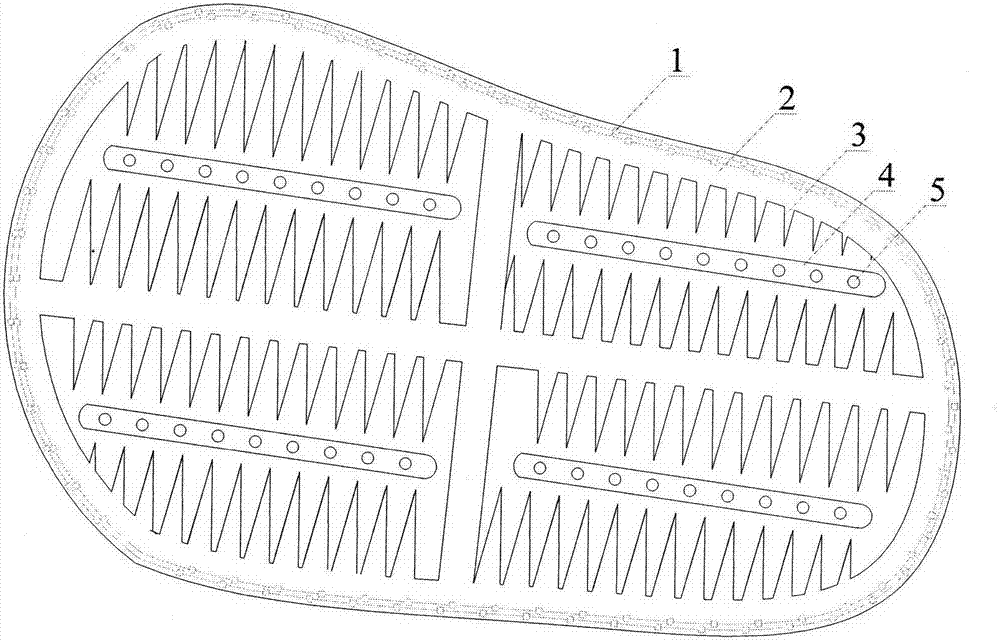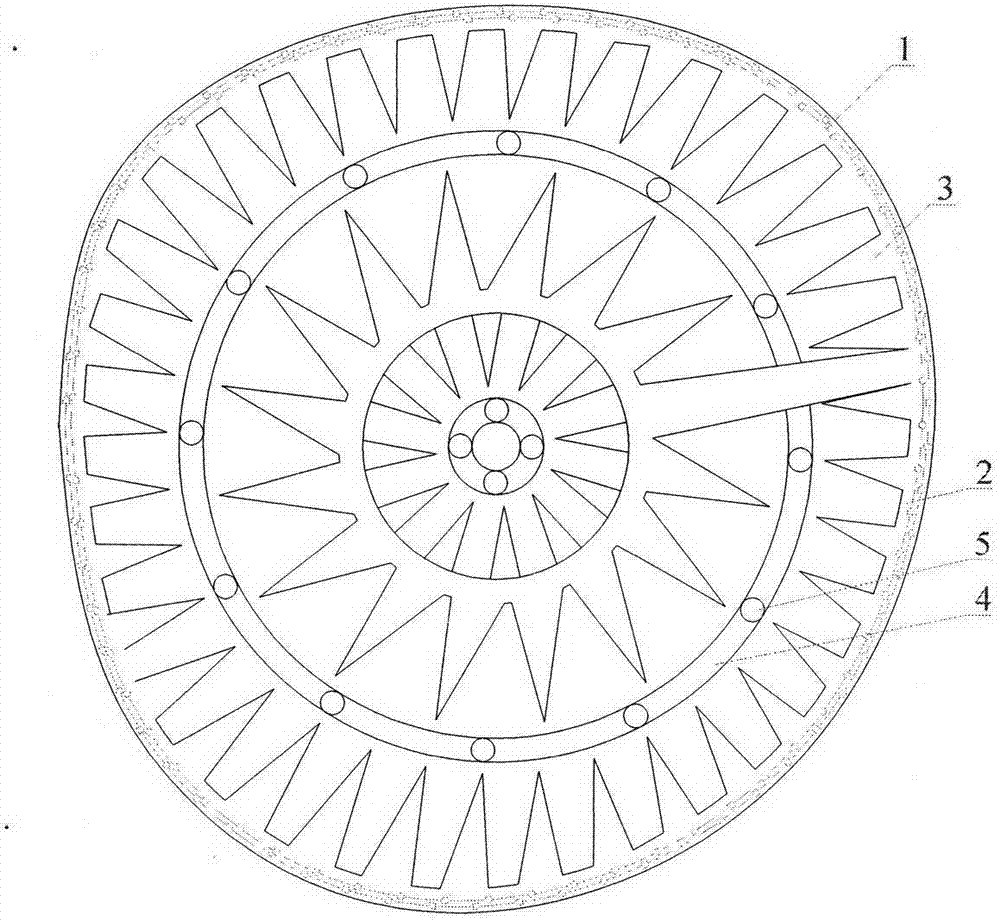Contaminated soil organized seepage in situ forced purification method
A polluted soil and seepage technology, which is applied in the field of contaminated site restoration, can solve problems such as the large influence of soil permeability distribution characteristics, backward detection and repair technology and equipment, and large differences in the distribution of leaching solutions, so as to achieve the Strong control, overcome the instability of leaching effect, and shorten the effect of rinsing time
- Summary
- Abstract
- Description
- Claims
- Application Information
AI Technical Summary
Problems solved by technology
Method used
Image
Examples
specific Embodiment 1
[0033] A lead-contaminated site is 435m long and 128.5m wide. The heavy metal content in the soil is shown in Table 1. The contaminated soil needs to be washed at a depth of 2.8m.
[0034] Table 1 Heavy metal content in soil of lead-contaminated sites (unit: mg / kg)
[0035] the element
Pb
Zn
Cr
Cu
content
29775.6
4907.1
239.4
1875.9
[0036] The contaminated site adopts rectangular partition units, and the unit washing area is about 50m*30m. Sodium dodecylbenzenesulfonate is selected as the surfactant, and the surfactant concentration of the washing solution is 0.05kg / m 3 , EDTA is a heavy metal chelating agent, the concentration of heavy metal chelating agent in the eluting solution is 0.2kg / m 3 , Layer thickness 0.4m. The concentration of heavy metals in the contaminated site soil after leaching and remediation is shown in Table 2.
[0037] Table 2 Heavy metal content in the leached remediation soil of the l...
specific Embodiment 2
[0042]The contaminated site of an electroplating nickel plant is 283m long and 204m wide, filled with engineering plain soil. The heavy metal content in the soil is shown in Table 4. The contaminated soil needs to be washed at a depth of 1.2m.
[0043] Table 4 Heavy metal content in soil of lead-contaminated sites (unit: mg / kg)
[0044] the element
Ni
Cu
Cr
Cd
content
4319.0
2572.1
789.2
60.3
[0045] The polluted site adopts a circular partition unit with a ring width of 2.5m. Rhamnolipid is selected as the surfactant, and the concentration of the surfactant in the washing solution is 0.2kg / m 3 , DTPA is a heavy metal chelating agent, the concentration of heavy metal chelating agent in the eluting solution is 0.5kg / m 3 , Layer thickness 0.3m. The concentration of heavy metals in the soil of the contaminated site after leaching and remediation is shown in Table 5.
[0046] Table 5 Heavy metal content in soil o...
PUM
 Login to View More
Login to View More Abstract
Description
Claims
Application Information
 Login to View More
Login to View More - R&D
- Intellectual Property
- Life Sciences
- Materials
- Tech Scout
- Unparalleled Data Quality
- Higher Quality Content
- 60% Fewer Hallucinations
Browse by: Latest US Patents, China's latest patents, Technical Efficacy Thesaurus, Application Domain, Technology Topic, Popular Technical Reports.
© 2025 PatSnap. All rights reserved.Legal|Privacy policy|Modern Slavery Act Transparency Statement|Sitemap|About US| Contact US: help@patsnap.com


